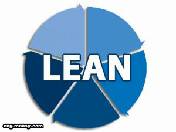Lean Principles an Innovative Approach for Achieving Sustainability in the Egyptian Construction Industry 9 From 11

– Fully embedded management processes which are consistently and rigorously applied and are clearly linked to the achievement of (LPs) objectives.
– Effective implementation of plans and
regular reviews to ensure that the benefits of (LPs) are realised and lessons are learned for future Programmes.
Framework Limitations and Potentials
The effective application of the framework depends to a large extent on the encouragement of the top management in construction firms to adopt (LPs) as an approach to achieve sustainability in construction.
If the top management does not have the desire and tended not to use the framework, then its adoption will be limited.
In addition, the application of the framework is a long-term strategy to improve the traditional culture and methods of doing work in construction, and hence it could be resisted by some sectors of the (CI).
For this reason, it is essential that the benefits of the framework be clearly presented to top management of construction firms in order to get them convinced with the role, which the framework could play in improving their performance and achieving sustainability in their projects.
This will increase the opportunities for adopting the framework.
Although the developed framework is a conceptual one and not validated due to the limited resources of the authors and time needed, it provides construction firms with detailed components that explain how to adopt and apply (LPs) in their projects.
Conclusions and Recommendations After reviewing the fundamentals of (LPs), Sustainability and investigating a number of case studies that benefited from (LPs) towards delivering sustainable products, and keeping in mind the results of the field study the research come to the following conclusions and recommendations:
– The (CI) plays a significant role towards social and economic development at national and international levels.



